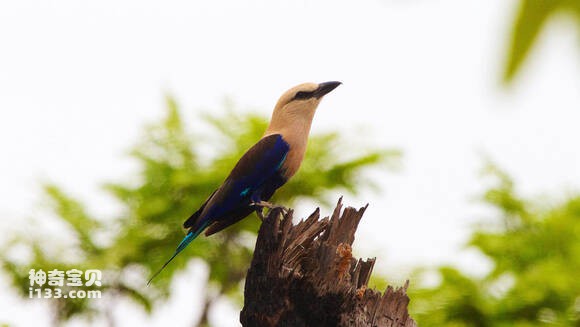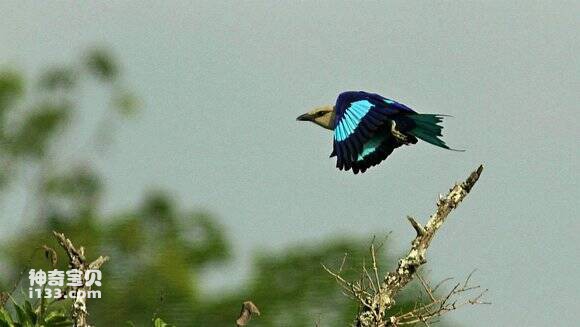Coracias cyanogaster
IUCN
LCBasic Information
Scientific classification
- name:Coracias cyanogaster
- Scientific Name:Coracias cyanogaster,Blue-bellied Roller
- Outline:Climbing birds
- Family:
Vital signs
- length:28-30cm
- Weight:110-178g
- lifetime:No textual research information is available
Feature
Distribution and Habitat
It is found in Benin, Burkina Faso, Cameroon, Central African Republic, Democratic Republic of the Congo, Cote d 'Ivoire, Gambia, Ghana, Guinea, Guinea-Bissau, Mali, Niger, Nigeria, Senegal, Sierra Leone, South Sudan, Sudan and Togo.
Traveler: Mauritania.
Blue-bellied Buddhas dominate almost exclusively in undeveloped virgin forest lands. The woods here are wet and open, a characteristic of Guinea, allowing more light to pass through. But on many occasions, it also occurs in a wide variety of other habitats, though less frequently. It lives in savannas, rainforests, forest belts near rainforests, plantations, grasslands, dense woods, and groves of palm trees along the edges of swamps and streams.
Appearance
The blue-bellied Buddhist monk is 28 ~ 30 cm long, the female bird weighs 112 ~ 178 grams, and the male bird weighs 110 ~ 150 grams. It is a medium-sized climbing bird. A small area first and behind the eyes is black, the top is slightly brown, the rest of the head, neck, throat, chin, and chest are pale yellow or off-white, and the face is almost white. This large area of white-gray plumage contrasts sharply with the lower half of the body. The underbody, back, rump and tail have a brilliant dark blue hue, the tail is light blue, and the belly, wings and undertail coverts are dark blue. There is a bright blue sheen 2 to 3 inches wide on the primary and secondary flight feathers. The underside of the tail is blue. The beak is black, the irises dark brown, and the legs deep olive green. Young birds are duller and less shiny than adults.
The mouth is quite long, straight and lateral flat, and the peak of the mouth is slightly curved; The mouth is wide, but the width of the mouth at th
Details
Blue-bellied Buddhist monk scientific name Coracias cyanogaster, foreign name blue-bellied Roller, no subspecies.

Blue-belted Buddhas live in pairs or small groups. In some areas, the species is very unsociable. In Cote d 'Ivoire, small groups of 3 to 6 individuals may gather (up to 20 individuals). They live together all day, keeping in touch with a raucous call that resembles crying. It is common to stop alone or in pairs in a position with a broad view, such as on the dead branches on the top of a tall tree in a open forest or arable land, and on a wire or telephone pole in an open place. Irregular flight, bumpy direction; Occasionally they take off to chase insects passing by, or dive down to catch insects on the ground, flying in a strange, heavy manner like a nighthawk, circling or flapping their wings at random, three or two birds sometimes fly or dive together at dusk, especially during courtship, sometimes they are besieged by flocks of small birds, because their heads and beaks look like birds of prey. Feeding is generally on the ground, when the bait is caught, it is swallowed on the spot, and it is swallowed when it is brought back to the habitat. Food is mainly insects, including termites, scarab, dragon louse, crickets, locusts, moths and other coleoptera, but also eat lizards, frogs. The call is a scream with a fricative sound like "gaga", and the ear is more noisy during courtship activities.

Blue-bellied Buddhas are monogamous or polygamous and are very territorial, fighting for territory during courtship. This African species builds its nests in tree holes more than 10 meters above the ground. Spawning occurs from April to July, but also from February to September in southern Cote d 'Ivoire, Senegal and Gambia.

Listed on the International Union for Conservation of Nature (IUCN) 2016 Red List of Threatened Species ver 3.1 - Not Threatened (LC).
Protect wild animals and eliminate wild meat.
Maintaining ecological balance is everyone's responsibility!








